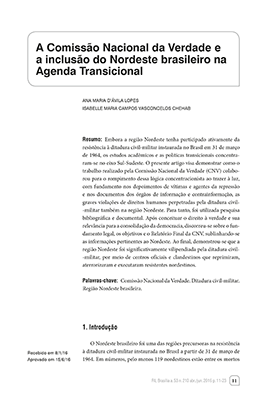Os ACFIs e os BITs assinados pelo Brasil: uma análise comparada
Érika Capella Fernandes
Jete Jane Fiorati
Resumo
Durante muito tempo, o Brasil assumiu uma posição bastante peculiar perante a regulamentação internacional relativa ao investimento estrangeiro direto. Embora tenha assinado catorze tratados bilaterais de investimento (BITs) nos anos 90, o País jamais chegou a ratificá-los. Contudo, em 2015, a tradicional posição brasileira sofreu uma modificação bastante notável, na medida em que teve início a assinatura de Acordos de Cooperação e Facilitação de Investimentos (ACFIs) com alguns parceiros comerciais. Dada a peculiaridade desses acordos, mostra-se oportuna a comparação de seus dispositivos com as regras presentes nos BITs assinados pelo País. O artigo analisa as normas materiais e procedimentais contidas nos acordos, com ênfase nos seguintes aspectos: preâmbulo dos acordos; definição de investidor e investimento; standards de proteção do investimento estrangeiro e mecanismos de solução de controvérsias.
Palavras-chave
ACFI. BIT. Direito internacional dos investimentos. Standards de proteção do investimento.
Título, resumo e palavras-chave em inglês
COOPERATION AND FACILITATION INVESTMENT AGREEMENTS AND BILATERAL INVESTMENT TREATIES SIGNED BY BRAZIL: A COMPARATIVE ANALYSIS
ABSTRACT: For a long time, the Brazilian position towards the international regime governing foreign direct investment was very peculiar. Although Brazil had signed fourteen bilateral investment treaties (BITs) in the 90s, the country has never ratified any of them. However, in 2015, this scenario has started to change and the country has begun to sign Cooperation and Facilitation Investment Agreements (CFIAs) with its commercial partners. The CFIAs signed by Brazil represent a new model of investment agreements and have particular features. Considering the peculiarities of these new agreements, it seems appropriate to compare their rules with the old rules found in the bilateral investment agreements signed by Brazil. The comparison between these rules allows us to understand the changes in the Brazilian position and to identify the implications of the new agreement. This paper compares the rules found in the CFIAs signed by Brazil with Angola and Mozambique and the rules found in the bilateral investment treaties signed in the 90s. This paper analyzes the substantial and procedural norms found in both kinds of agreements with special regard to the following aspects: preamble; definitions of investment and investor; standards of investment protection and dispute settlement mechanisms.
KEYWORDS: COOPERATION AND FACILITATION INVESTMENT AGREEMENTS. BILATERAL INVESTMENT TREATIES. INTERNATIONAL INVESTMENT LAW. STANDARDS OF INVESTMENT PROTECTION.
Como citar este artigo
(ABNT)
FERNANDES, Érika Capella; FIORATI, Jete Jane. Os ACFIs e os BITs assinados pelo Brasil: uma análise comparada. Revista de informação legislativa: RIL, v. 52, n. 208, p. 247-276, out./dez. 2015. Disponível em: <https://www12.senado.leg.br/ril/edicoes/52/208/ril_v52_n208_p247>.
(APA)
Fernandes, E. C., & Fiorati, J. J. (2015). Os ACFIs e os BITs assinados pelo Brasil: uma análise comparada. Revista de informação legislativa: RIL, 52(208), 247-276. Recuperado de https://www12.senado.leg.br/ril/edicoes/52/208/ril_v52_n208_p247
